Soaring commodity costs caused by drought have prompted a promotional frenzy in yellow fats as retailers try to counter the impact of sharp retail price rises. Simon Mowbray reports
Few topics in the history of UK grocery have exercised the nation as much as the price of butter.
From the shortages of the war years to the over-production subsidies that caused the EU butter mountains of the 1980s, the topic has regularly graced the pages of newspapers which is hardly surprising considering the UK's per capita consumption is among the highest in the world.
Now it's been thrust into the limelight again, thanks to two violently contradictory trends a sharp rise in retail prices on the back of global shortages and soaring input costs and, pulling in the opposite direction, an aggressive price promotion campaign by retailers and brand owners to mitigate the impact of such price rises.
These factors have inevitably been reflected in the category's performance. Driven chiefly by a 10.3% rise in price per kilo, the total yellow fats market the not so glamorous term that encapsulates everything from the finest French butter to budget own-label margarine has grown 12.9% to £1.23bn in the past year [Kantar Worldpanel 52w/e 17 April 2011].
Volume growth, meanwhile, lagged massively behind at 2.6% the weight of promotional activity in this brand-dominated category not enough to counter the impact of price rises on consumer demand. However, context is all and even this figure should be seen as a good result compared with last year, when volumes rose just 1.6% despite a near doubling in the volume of products sold on deal and value sales actually fell, by 1.3% to £1.09bn.
The question is: can the momentum be maintained?
It will be tough if there are further price rises, which is why retailers and manufacturers alike are piling on the promotional pressure. Promotions accounted for 53% of branded volume sales this year, up from 47% last year and just 25% in 2008 [Kantar].
To date, the category's tactics appear to have worked. Deep-cut promotional deals, interspersed with sporadic price rises and selling at full price by leading brands, have helped butter grow 15.3% in value at the till. The major butter brands headed by Arla's market-leading Lurpak and Anchor, and trailed by Dairy Crest's Country Life and Kerry Foods' Kerrygold now account for 46.2% of all yellow fat sales by value. Volume growth has also been healthy at 5.4%, giving butter a 31% share of sales.
The same combination of sporadic price rises and deep-cut promotions in other yellow fats categories, from the dairy spreads dominated by Dairy Crest's Clover and Unilever's I Can't Believe It's Not Butter to the margarines led by Unilever's Flora, has also led to value growth.
The volume figures, however, tell a slightly different story. Low-fat spreads prompted by the nation's continuing desire for a healthier diet are among the biggest risers, up 7.1% to claim a 16% share of the total yellow fats market by volume. However, dairy spreads saw volume sales fall 3.0%, although value sales rose 7.8%.
This suggests that promotions are not the panacea for all price rise ills and that some sub-categories will continue to struggle on the volume front especially if there's further upward pressure on prices.
Unfortunately, things are unlikely to become easier for dairy producers any time soon, warn analysts. A shortage of milk caused by hot weather means butter production in Europe has been struggling to meet demand, says Mintec commodity analyst Robert Miles. "Lower dairy yields coupled with the global wheat shortage have affected livestock feed supply and led to a challenging situation for all dairy producers, whatever their end product might be."
The Russian ban on grain exports also meant the Middle East had to go to France for a lot of its wheat, which in turn led to price rises through the global supply chain, adds Miles. Russia is this month releasing stores of its wheat to the global market again, but, as Miles points out, future supplies will still be governed by volatile global weather patterns.
"It's not just been Russia and Europe that have been affected," he adds. "The southern hemisphere has had its own problems with drought, which has inevitably affected imported brands like Anchor in terms of the price they pay for key inputs."
Miles isn't overly optimistic about the category's short-term prospects, but says the medium-term indicators are more promising. "It's likely that more producers of key inputs for yellow fats will have come into the market following the recent attractive price rises, but that will still take a bit of time to feed through to the price of end products in-store."
Meanwhile, competition between the brands remains fiercer than ever. The traditional status quo when retailers and brand owners clearly knew where individual branded lines stood in the great scheme of things, particularly in terms of pricing has been severely disrupted. It is no longer the norm to see brands sold at full retail price most of the time and supported sporadically with 'miss it or miss out'-style promotions.
Rather the reverse. According to Assosia, there were no fewer than 688 promotions on butters and spreads across the big five retailers between May 2010 and April 2011 43 more than the previous year. Favourite mechanics have been 'save' and 'x-for-y' price promotions, while a run down the list of average savings off the 10 leading brands shows that, sometimes at least, shoppers of the category have rarely had it so good.
Of the retailers, Morrisons, Sainsbury's and Tesco had the biggest number of deals, with all three running more than 150, while Asda and Waitrose bucked the trend by running fewer as they concentrated on other mechanics to pull shoppers into the category, such as everyday price promises.
In terms of the top 10 brands, market leader Lurpak has been busiest when it comes to promotions, while its stablemate Anchor although still the fourth-most promoted brand in yellow fats ran 11 fewer promotions compared with last year. "We are generally seeing more and more promotional activity," says Assosia MD Kay Staniland. "I do not think that people are particularly brand-loyal so it is purely down to competition. 'X-for-y' has jumped up in the past couple of years as a favourite mechanic, as has 'extra-free'."
Lurpak has been the most aggressive player within 'x-for-y', accounting for nearly half of all examples of the mechanic with 119 promotions, followed by second-highest Anchor with 42.
"Retailers and brand owners have come together to make sure the biggest sellers are still being picked up off shelf. Products have a longer shelf life than in other categories and that is why 'x-for-y' is so popular," says Staniland. "The theory is that it makes people slightly more brand-loyal because by the time they need more product, it is quite possible that the mechanic will again be available on the brands they buy."
While promotions have come to the fore, suppliers have not been neglecting marketing or NPD. In the ever-competitive butter market, Anchor was back on TV in March 2011 with a revival of its popular 'Made by Cows' ad, in which it flagged up the Original Butter Co. and shied away from its New Zealand origins, instead playing on its status as Britain's oldest butter brand. More recently, the brand has been on screens again to mark its 125th birthday with a new advert showing Anchor cows making preparations for the celebration by icing a large Anchor Butter birthday cake.
"We repositioned last year away from the 'Free Range Butter Company' and towards heritage, which people have found both interesting and credible," claims Anchor senior brand manager Mike Walker. "As a result, household penetration has grown from 27.1% to 30.6%."
Lurpak, meanwhile, has also been busy trying to give itself a point of difference beyond promotions with its Good Food Deserves campaign, positioning the brand as the natural choice to enhance good food in a bid to encourage more usage occasions.
The campaign began in January, incorporating TV, cinema and outdoor advertising, and has helped attract a new audience, says senior brand manager Thryth Jarvis. The launch of Lurpak Sea Salt, Unsalted and an on-pack herbs giveaway promotion have further enhanced Lurpak's foodie credentials, she says, adding that her team are now readying themselves for the launch this month of new Lurpak Lighter with Olive Oil.
"We are continuing to build on the essence of the brand being about good food," says Jarvis. "It's about inspiring people to make every food occasion better, particularly in the week when it is often too easy to succumb to a ready meal or pizza.
"Yes, we have been busy on promotions but have also moved away from temporary price cuts towards other mechanics such as 'x-for-y' as they help brand loyalty and category volume more while not eroding too much value. We have grown by both volume and value, which shows how we have great brand affinity."
Nathan King, head of marketing for butters and spreads at Dairy Crest, agrees promotions are still a necessary evil, although Country Life has cut such activity by more than a third in the past year. "The market is being driven by price inflation but that is not unusual compared with other categories," says King. "Historically, volume on deal has been about 20% on average, but we are in a very different market now. Even though we're out of recession, people still have less disposable income."
As the "only major British butter brand", Dairy Crest is hoping its new Great British Picnic Campaign for Country Life will tickle taste buds. The campaign, launched last month, includes a mobile phone app and micro site with information on more than 600 UK picnic locations, picnic recipes and travel details. Country Life has also been reinforcing its origins with a fresh TV burst of its brand ambassador, former Sex Pistols frontman John Lydon.
Rival Kerrygold, meanwhile, has been ramping up innovation at the expense of promotion. "We reviewed what we were doing last year and decided that with both packet butter and spreadables it was a pretty static market," says Alison Palmer, Kerrygold brand marketing controller. "Promotions are a game for the producers with the deepest pockets, so we decided we had to do something different."
That's meant concentrating on launches such as Kerrygold Honey Spread across all major retailers in April (see p50), while Kerrygold Unsalted Lighter hit chillers in Morrisons and Asda in May. The heavy hitters, meanwhile, have been slugging it out to win consumers looking for a convenient and instantly spreadable alternative to pack butter.
Flora pro.activ has grown in value over the past year, with a key driver being Flora pro.activ Buttery, which has taken £6.6m since launch and been backed by a £1m marketing package that includes TV ads.
"This addition to the range aims to encourage consumers to trade up to cholesterol-lowering products and increase frequency of purchase among existing users," says Pankaj Sharma, spreads category director at Unilever UK. "Six out of 10 people who tested Flora pro.activ Buttery said it tasted as good as butter, so this, along with our trusted brand values, offers a great opportunity to grow the category."
Not all spreadable butters have had a great year, however. Dairy Crest's Utterly Butterly now trails massively behind rival I Can't Believe It's Not Butter, from Unilever, thanks to its continued absence from the chillers of Asda and Sainsbury's. Its sales have slumped 15% to £40.1m, while ICBINB's have leapt 26.1% to £64.4m. Despite this, Dairy Crest remains upbeat about the rest of its portfolio, with sales of the Lighter variant of its £86m Clover spreadable brand among the highlights, says King.
"We are concentrating on putting more value into the market through innovation and will have more products coming down the line before the year-end, which will drive further value," he says. "Innovation, not trading wars, is the only sustainable way to grow the category long term."
While the category continues to be dominated by the big guns, there is still room for smaller players such as South Caernarfon Creameries' Dragon Butter and Northern Ireland dairy producer Dale Farm, which has been carving out its own niche with Loseley Summer Meadow Butter, a "naturally softer" butter that spreads straight from the fridge (rsp: £1.39).
"We have run some price promotions but the brand is already worth £1m within two years of launch," adds Brian Beattie, Head of Marketing at Dale Farm. "We are now looking for additional listings and at extending the range with different formats as well as added-value products."
Yeo Valley & Wyke Farms also continue to carve out a niche in a competitive market, both with premium offerings. In March, Wyke, which claims to be the UK's largest independent cheese producer and milk processor, re-branded its Truly Scrumptious Farmhouse Butter as Ivy's Original Farmhouse Butter to better reflect the company's provenance by featuring founder Ivy Clothier on pack. Available in 250g salted and unsalted packs, the brand is in all major retailers and is aimed at the dinner party and special occasion market.
Meanwhile, Yeo Valley has boosted the profile and sales of its organic portfolio, which includes salted and unsalted butters, with its award-winning 'Live in harmony' ad campaign, featuring rapping farmers. "The campaign has been given a new direction so that consumers see us as a contemporary dairy brand," says spokesman Ben Cull.
"Our butters and spreads now have our new milk drop logo and have been supported with a range of promotions. Yeo Valley's desire to build long-term brand values also means we want to stand out on shelf and be seen as a modern and authentic brand of affordable quality from a British, West Country-based company."
Such promotions, NPD and high-profile marketing have provided a fillip for retailers. The big four have been among the biggest gainers, each posting extra value sales of at least 10% over the past 12 months, although Iceland and Waitrose appear to be making the most of the market conditions.
Iceland is the only supermarket to have dropped its core prices, while Waitrose is capitalising on its higher prices. "Iceland's move has paid off with increased volume sales, achieving the highest level of spend growth at 19.8%," says Kantar analyst Erica Williams. "Waitrose also continues to perform strongly, with shoppers buying more frequently and at a higher price."
John Smethurst, Iceland's buyer for butters and spreads, claims it has been a great year for value and volume growth. "The category is still under a lot of pressure and things have since slowed a little, but most of our growth has been from sub-categories such as buttery spreads and spreadable butter in which we have always over-traded, possibly because we do not carry as many lines as other retailers but give them proportionally more space."
Iceland's top performer last year was I Can't Believe It's Not Butter, which, at £1 for a 500g tub, proved a favourite compared with Utterly Butterly at £1.25. However, Iceland is currently offering a multibuy deal on the latter, effectively making it the same £1-a-pack proposition.
It's a tightrope that suppliers and retailers have to walk to gain an edge over their rivals. "The category will remain competitive and challenging," predicts Smethurst. "It doesn't look like prices are going up but even though there is some brand loyalty, shoppers are looking for deals as well."
In short, butter is likely to remain as much of a topic of discussion as it ever has been.
Focus On Butters & Spreads
Few topics in the history of UK grocery have exercised the nation as much as the price of butter.
From the shortages of the war years to the over-production subsidies that caused the EU butter mountains of the 1980s, the topic has regularly graced the pages of newspapers which is hardly surprising considering the UK's per capita consumption is among the highest in the world.
Now it's been thrust into the limelight again, thanks to two violently contradictory trends a sharp rise in retail prices on the back of global shortages and soaring input costs and, pulling in the opposite direction, an aggressive price promotion campaign by retailers and brand owners to mitigate the impact of such price rises.
These factors have inevitably been reflected in the category's performance. Driven chiefly by a 10.3% rise in price per kilo, the total yellow fats market the not so glamorous term that encapsulates everything from the finest French butter to budget own-label margarine has grown 12.9% to £1.23bn in the past year [Kantar Worldpanel 52w/e 17 April 2011].
Volume growth, meanwhile, lagged massively behind at 2.6% the weight of promotional activity in this brand-dominated category not enough to counter the impact of price rises on consumer demand. However, context is all and even this figure should be seen as a good result compared with last year, when volumes rose just 1.6% despite a near doubling in the volume of products sold on deal and value sales actually fell, by 1.3% to £1.09bn.
The question is: can the momentum be maintained?
It will be tough if there are further price rises, which is why retailers and manufacturers alike are piling on the promotional pressure. Promotions accounted for 53% of branded volume sales this year, up from 47% last year and just 25% in 2008 [Kantar].
To date, the category's tactics appear to have worked. Deep-cut promotional deals, interspersed with sporadic price rises and selling at full price by leading brands, have helped butter grow 15.3% in value at the till. The major butter brands headed by Arla's market-leading Lurpak and Anchor, and trailed by Dairy Crest's Country Life and Kerry Foods' Kerrygold now account for 46.2% of all yellow fat sales by value. Volume growth has also been healthy at 5.4%, giving butter a 31% share of sales.
The same combination of sporadic price rises and deep-cut promotions in other yellow fats categories, from the dairy spreads dominated by Dairy Crest's Clover and Unilever's I Can't Believe It's Not Butter to the margarines led by Unilever's Flora, has also led to value growth.
The volume figures, however, tell a slightly different story. Low-fat spreads prompted by the nation's continuing desire for a healthier diet are among the biggest risers, up 7.1% to claim a 16% share of the total yellow fats market by volume. However, dairy spreads saw volume sales fall 3.0%, although value sales rose 7.8%.
This suggests that promotions are not the panacea for all price rise ills and that some sub-categories will continue to struggle on the volume front especially if there's further upward pressure on prices.
Unfortunately, things are unlikely to become easier for dairy producers any time soon, warn analysts. A shortage of milk caused by hot weather means butter production in Europe has been struggling to meet demand, says Mintec commodity analyst Robert Miles. "Lower dairy yields coupled with the global wheat shortage have affected livestock feed supply and led to a challenging situation for all dairy producers, whatever their end product might be."
The Russian ban on grain exports also meant the Middle East had to go to France for a lot of its wheat, which in turn led to price rises through the global supply chain, adds Miles. Russia is this month releasing stores of its wheat to the global market again, but, as Miles points out, future supplies will still be governed by volatile global weather patterns.
"It's not just been Russia and Europe that have been affected," he adds. "The southern hemisphere has had its own problems with drought, which has inevitably affected imported brands like Anchor in terms of the price they pay for key inputs."
Miles isn't overly optimistic about the category's short-term prospects, but says the medium-term indicators are more promising. "It's likely that more producers of key inputs for yellow fats will have come into the market following the recent attractive price rises, but that will still take a bit of time to feed through to the price of end products in-store."
Meanwhile, competition between the brands remains fiercer than ever. The traditional status quo when retailers and brand owners clearly knew where individual branded lines stood in the great scheme of things, particularly in terms of pricing has been severely disrupted. It is no longer the norm to see brands sold at full retail price most of the time and supported sporadically with 'miss it or miss out'-style promotions.
Rather the reverse. According to Assosia, there were no fewer than 688 promotions on butters and spreads across the big five retailers between May 2010 and April 2011 43 more than the previous year. Favourite mechanics have been 'save' and 'x-for-y' price promotions, while a run down the list of average savings off the 10 leading brands shows that, sometimes at least, shoppers of the category have rarely had it so good.
Of the retailers, Morrisons, Sainsbury's and Tesco had the biggest number of deals, with all three running more than 150, while Asda and Waitrose bucked the trend by running fewer as they concentrated on other mechanics to pull shoppers into the category, such as everyday price promises.
In terms of the top 10 brands, market leader Lurpak has been busiest when it comes to promotions, while its stablemate Anchor although still the fourth-most promoted brand in yellow fats ran 11 fewer promotions compared with last year. "We are generally seeing more and more promotional activity," says Assosia MD Kay Staniland. "I do not think that people are particularly brand-loyal so it is purely down to competition. 'X-for-y' has jumped up in the past couple of years as a favourite mechanic, as has 'extra-free'."
Lurpak has been the most aggressive player within 'x-for-y', accounting for nearly half of all examples of the mechanic with 119 promotions, followed by second-highest Anchor with 42.
"Retailers and brand owners have come together to make sure the biggest sellers are still being picked up off shelf. Products have a longer shelf life than in other categories and that is why 'x-for-y' is so popular," says Staniland. "The theory is that it makes people slightly more brand-loyal because by the time they need more product, it is quite possible that the mechanic will again be available on the brands they buy."
While promotions have come to the fore, suppliers have not been neglecting marketing or NPD. In the ever-competitive butter market, Anchor was back on TV in March 2011 with a revival of its popular 'Made by Cows' ad, in which it flagged up the Original Butter Co. and shied away from its New Zealand origins, instead playing on its status as Britain's oldest butter brand. More recently, the brand has been on screens again to mark its 125th birthday with a new advert showing Anchor cows making preparations for the celebration by icing a large Anchor Butter birthday cake.
"We repositioned last year away from the 'Free Range Butter Company' and towards heritage, which people have found both interesting and credible," claims Anchor senior brand manager Mike Walker. "As a result, household penetration has grown from 27.1% to 30.6%."
Lurpak, meanwhile, has also been busy trying to give itself a point of difference beyond promotions with its Good Food Deserves campaign, positioning the brand as the natural choice to enhance good food in a bid to encourage more usage occasions.
The campaign began in January, incorporating TV, cinema and outdoor advertising, and has helped attract a new audience, says senior brand manager Thryth Jarvis. The launch of Lurpak Sea Salt, Unsalted and an on-pack herbs giveaway promotion have further enhanced Lurpak's foodie credentials, she says, adding that her team are now readying themselves for the launch this month of new Lurpak Lighter with Olive Oil.
"We are continuing to build on the essence of the brand being about good food," says Jarvis. "It's about inspiring people to make every food occasion better, particularly in the week when it is often too easy to succumb to a ready meal or pizza.
"Yes, we have been busy on promotions but have also moved away from temporary price cuts towards other mechanics such as 'x-for-y' as they help brand loyalty and category volume more while not eroding too much value. We have grown by both volume and value, which shows how we have great brand affinity."
Nathan King, head of marketing for butters and spreads at Dairy Crest, agrees promotions are still a necessary evil, although Country Life has cut such activity by more than a third in the past year. "The market is being driven by price inflation but that is not unusual compared with other categories," says King. "Historically, volume on deal has been about 20% on average, but we are in a very different market now. Even though we're out of recession, people still have less disposable income."
As the "only major British butter brand", Dairy Crest is hoping its new Great British Picnic Campaign for Country Life will tickle taste buds. The campaign, launched last month, includes a mobile phone app and micro site with information on more than 600 UK picnic locations, picnic recipes and travel details. Country Life has also been reinforcing its origins with a fresh TV burst of its brand ambassador, former Sex Pistols frontman John Lydon.
Rival Kerrygold, meanwhile, has been ramping up innovation at the expense of promotion. "We reviewed what we were doing last year and decided that with both packet butter and spreadables it was a pretty static market," says Alison Palmer, Kerrygold brand marketing controller. "Promotions are a game for the producers with the deepest pockets, so we decided we had to do something different."
That's meant concentrating on launches such as Kerrygold Honey Spread across all major retailers in April (see p50), while Kerrygold Unsalted Lighter hit chillers in Morrisons and Asda in May. The heavy hitters, meanwhile, have been slugging it out to win consumers looking for a convenient and instantly spreadable alternative to pack butter.
Flora pro.activ has grown in value over the past year, with a key driver being Flora pro.activ Buttery, which has taken £6.6m since launch and been backed by a £1m marketing package that includes TV ads.
"This addition to the range aims to encourage consumers to trade up to cholesterol-lowering products and increase frequency of purchase among existing users," says Pankaj Sharma, spreads category director at Unilever UK. "Six out of 10 people who tested Flora pro.activ Buttery said it tasted as good as butter, so this, along with our trusted brand values, offers a great opportunity to grow the category."
Not all spreadable butters have had a great year, however. Dairy Crest's Utterly Butterly now trails massively behind rival I Can't Believe It's Not Butter, from Unilever, thanks to its continued absence from the chillers of Asda and Sainsbury's. Its sales have slumped 15% to £40.1m, while ICBINB's have leapt 26.1% to £64.4m. Despite this, Dairy Crest remains upbeat about the rest of its portfolio, with sales of the Lighter variant of its £86m Clover spreadable brand among the highlights, says King.
"We are concentrating on putting more value into the market through innovation and will have more products coming down the line before the year-end, which will drive further value," he says. "Innovation, not trading wars, is the only sustainable way to grow the category long term."
While the category continues to be dominated by the big guns, there is still room for smaller players such as South Caernarfon Creameries' Dragon Butter and Northern Ireland dairy producer Dale Farm, which has been carving out its own niche with Loseley Summer Meadow Butter, a "naturally softer" butter that spreads straight from the fridge (rsp: £1.39).
"We have run some price promotions but the brand is already worth £1m within two years of launch," adds Brian Beattie, Head of Marketing at Dale Farm. "We are now looking for additional listings and at extending the range with different formats as well as added-value products."
Yeo Valley & Wyke Farms also continue to carve out a niche in a competitive market, both with premium offerings. In March, Wyke, which claims to be the UK's largest independent cheese producer and milk processor, re-branded its Truly Scrumptious Farmhouse Butter as Ivy's Original Farmhouse Butter to better reflect the company's provenance by featuring founder Ivy Clothier on pack. Available in 250g salted and unsalted packs, the brand is in all major retailers and is aimed at the dinner party and special occasion market.
Meanwhile, Yeo Valley has boosted the profile and sales of its organic portfolio, which includes salted and unsalted butters, with its award-winning 'Live in harmony' ad campaign, featuring rapping farmers. "The campaign has been given a new direction so that consumers see us as a contemporary dairy brand," says spokesman Ben Cull.
"Our butters and spreads now have our new milk drop logo and have been supported with a range of promotions. Yeo Valley's desire to build long-term brand values also means we want to stand out on shelf and be seen as a modern and authentic brand of affordable quality from a British, West Country-based company."
Such promotions, NPD and high-profile marketing have provided a fillip for retailers. The big four have been among the biggest gainers, each posting extra value sales of at least 10% over the past 12 months, although Iceland and Waitrose appear to be making the most of the market conditions.
Iceland is the only supermarket to have dropped its core prices, while Waitrose is capitalising on its higher prices. "Iceland's move has paid off with increased volume sales, achieving the highest level of spend growth at 19.8%," says Kantar analyst Erica Williams. "Waitrose also continues to perform strongly, with shoppers buying more frequently and at a higher price."
John Smethurst, Iceland's buyer for butters and spreads, claims it has been a great year for value and volume growth. "The category is still under a lot of pressure and things have since slowed a little, but most of our growth has been from sub-categories such as buttery spreads and spreadable butter in which we have always over-traded, possibly because we do not carry as many lines as other retailers but give them proportionally more space."
Iceland's top performer last year was I Can't Believe It's Not Butter, which, at £1 for a 500g tub, proved a favourite compared with Utterly Butterly at £1.25. However, Iceland is currently offering a multibuy deal on the latter, effectively making it the same £1-a-pack proposition.
It's a tightrope that suppliers and retailers have to walk to gain an edge over their rivals. "The category will remain competitive and challenging," predicts Smethurst. "It doesn't look like prices are going up but even though there is some brand loyalty, shoppers are looking for deals as well."
In short, butter is likely to remain as much of a topic of discussion as it ever has been.
Focus On Butters & Spreads



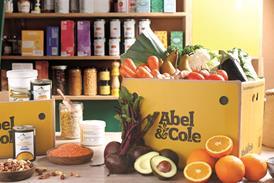
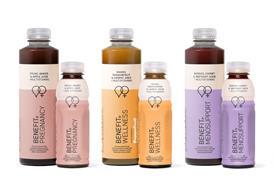




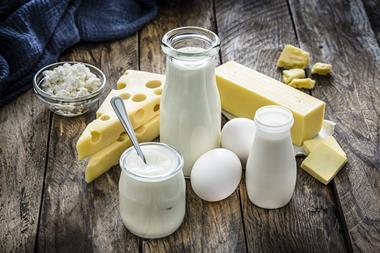
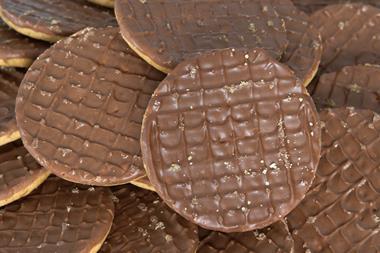
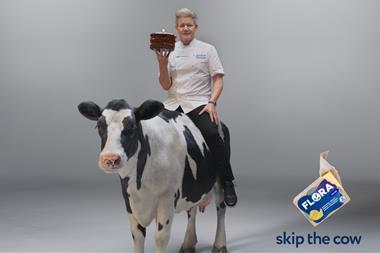
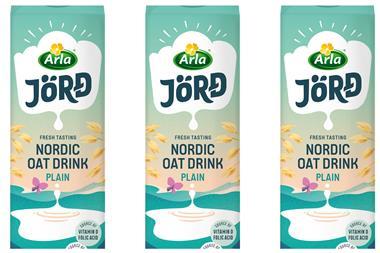




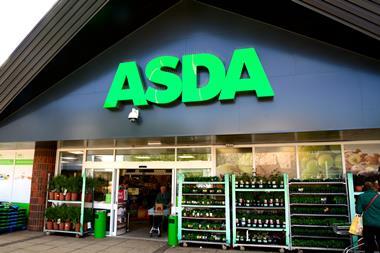

No comments yet